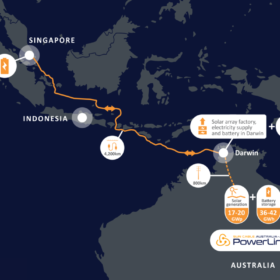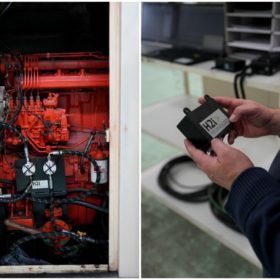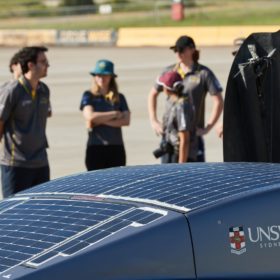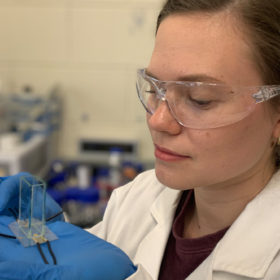Japanese oil giant opens PV-powered hydrogen pilot in Australia
Japan’s largest oil company, Eneos, has opened a green hydrogen demonstration plant in Brisbane, Australia. The project is relatively small, producing just 20 kilograms of green hydrogen per day, but Eneos Senior Vice President Yuichiro Fujiyama says the company will expand it in the “near future.”
World’s biggest solar, storage project up for sale
Sun Cable, the company behind the world’s largest solar and storage project, has officially gone up for sale after entering voluntary administration in Australia in January. Its administrator, FTI Consulting, is seeking binding offers of acquisition or recapitalization by the end of April, with a deal to be finalized by the end of May.
Australian startup develops systems to inject hydrogen into diesel engines
H2i Technology has developed a hydrogen enhancement kit that injects hydrogen into existing diesel engines to reduce diesel use. It is building 10 commercial-ready systems and plans to soon start field testing.
Australian scientists unveil method to produce hydrogen straight from ocean
University of Adelaide researchers and their international partners have successfully used seawater with no pre-treatment to produce green hydrogen. They did this by introducing an acid layer over the catalysts in situ.
Construction begins on 93 MW Australian solar farm
Construction has started on a 93 MW solar project in the Australian state of Victoria. The installation, which has been under development for at least five years, was sold to Enel Green Power in 2019.
Contract awarded for New Zealand’s first big battery
New Zealand is set to get its first big battery by 2024, as Meridian Energy has chosen Saft to build the 100 MW / 200 MWh Ruakaka battery energy storage system on the country’s North Island.
Sun Cable enters voluntary administration
Sun Cable, the developer of the world’s largest solar and battery project, has entered voluntary administration. It is still unclear what this will mean for its hallmark project, the Australia-Asia PowerLink.
3D electronics printer has potential to reshape solar and storage
Australian startup Syenta has developed a 3D printer capable of printing highly complex and functional electronics like photovoltaics, batteries, sensors and more, promising to do so in ways that are faster, cheaper and use less energy.
New record for fastest single-charge solar EV over 1,000 km claimed
A solar-powered electric vehicle, designed and built by students of Australia’s University of New South Wales, has claimed a provisional Guinness World Record by going 1,000 km on a single charge in under 12 hours.
Australian researchers use sound waves to expand green hydrogen
Researchers from RMIT University and the University of Melbourne claim that high-frequency vibrations can release 14 times more hydrogen than standard electrolysis techniques. The discovery has ramifications for the expensive, rare materials currently used in electrolyzers.











